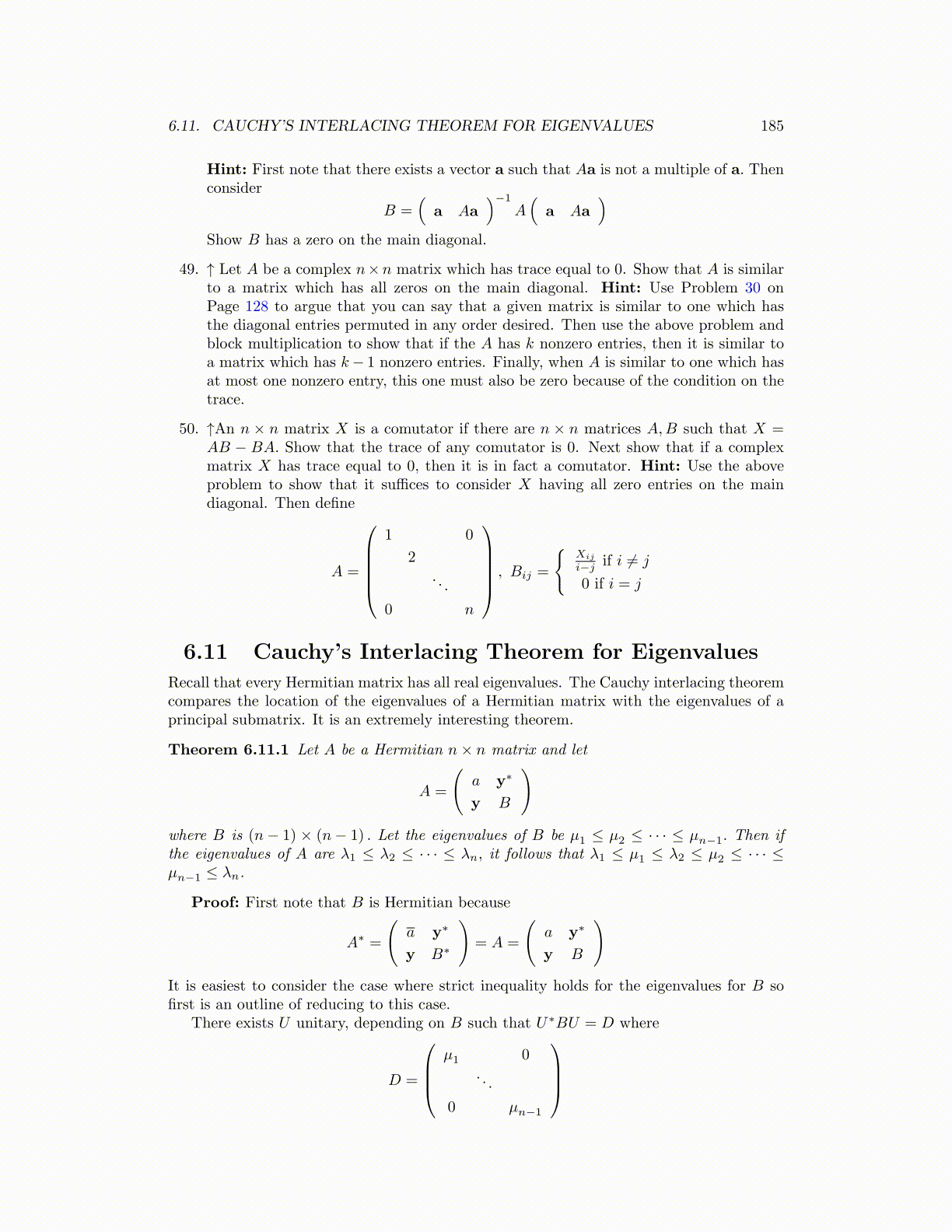
6.11. CAUCHY’S INTERLACING THEOREM FOR EIGENVALUES 185
Hint: First note that there exists a vector a such that Aa is not a multiple of a. Thenconsider
B =(
a Aa)−1
A(
a Aa)
Show B has a zero on the main diagonal.
49. ↑ Let A be a complex n×n matrix which has trace equal to 0. Show that A is similarto a matrix which has all zeros on the main diagonal. Hint: Use Problem 30 onPage 128 to argue that you can say that a given matrix is similar to one which hasthe diagonal entries permuted in any order desired. Then use the above problem andblock multiplication to show that if the A has k nonzero entries, then it is similar toa matrix which has k− 1 nonzero entries. Finally, when A is similar to one which hasat most one nonzero entry, this one must also be zero because of the condition on thetrace.
50. ↑An n × n matrix X is a comutator if there are n × n matrices A,B such that X =AB − BA. Show that the trace of any comutator is 0. Next show that if a complexmatrix X has trace equal to 0, then it is in fact a comutator. Hint: Use the aboveproblem to show that it suffices to consider X having all zero entries on the maindiagonal. Then define
A =
1 0
2. . .
0 n
, Bij =
{Xij
i−j if i ̸= j
0 if i = j
6.11 Cauchy’s Interlacing Theorem for Eigenvalues
Recall that every Hermitian matrix has all real eigenvalues. The Cauchy interlacing theoremcompares the location of the eigenvalues of a Hermitian matrix with the eigenvalues of aprincipal submatrix. It is an extremely interesting theorem.
Theorem 6.11.1 Let A be a Hermitian n× n matrix and let
A =
(a y∗
y B
)where B is (n− 1) × (n− 1) . Let the eigenvalues of B be µ1 ≤ µ2 ≤ · · · ≤ µn−1. Then ifthe eigenvalues of A are λ1 ≤ λ2 ≤ · · · ≤ λn, it follows that λ1 ≤ µ1 ≤ λ2 ≤ µ2 ≤ · · · ≤µn−1 ≤ λn.
Proof: First note that B is Hermitian because
A∗ =
(a y∗
y B∗
)= A =
(a y∗
y B
)It is easiest to consider the case where strict inequality holds for the eigenvalues for B sofirst is an outline of reducing to this case.
There exists U unitary, depending on B such that U∗BU = D where
D =
µ1 0
. . .
0 µn−1